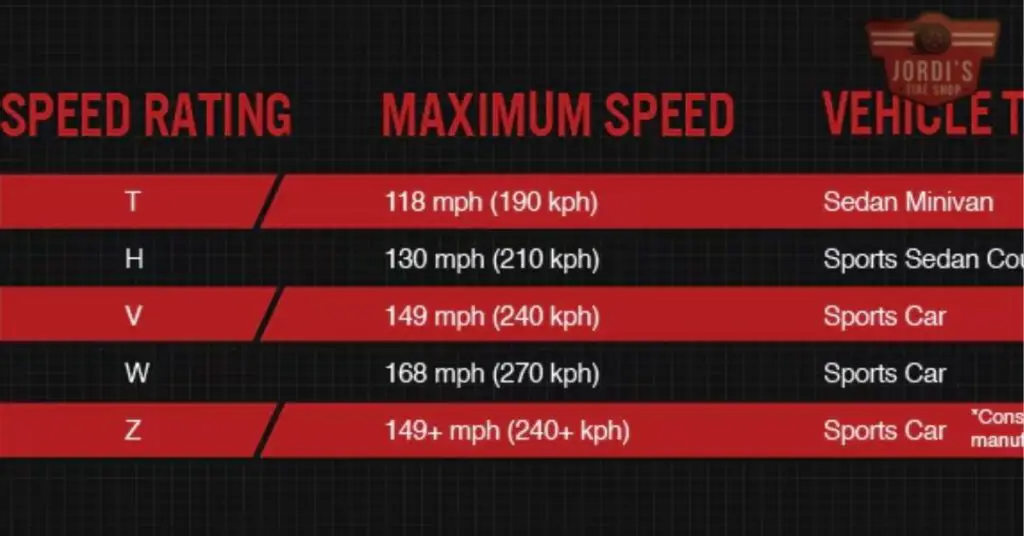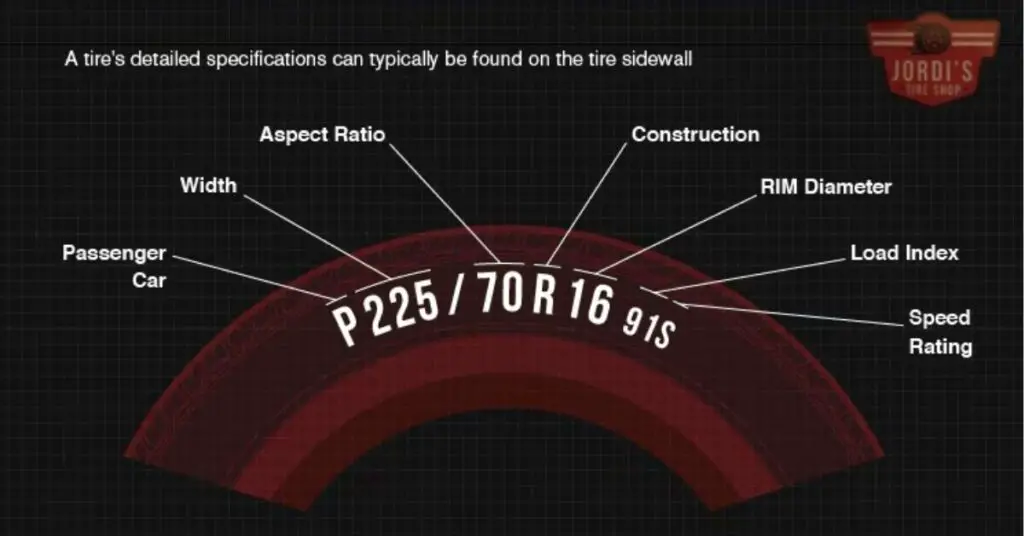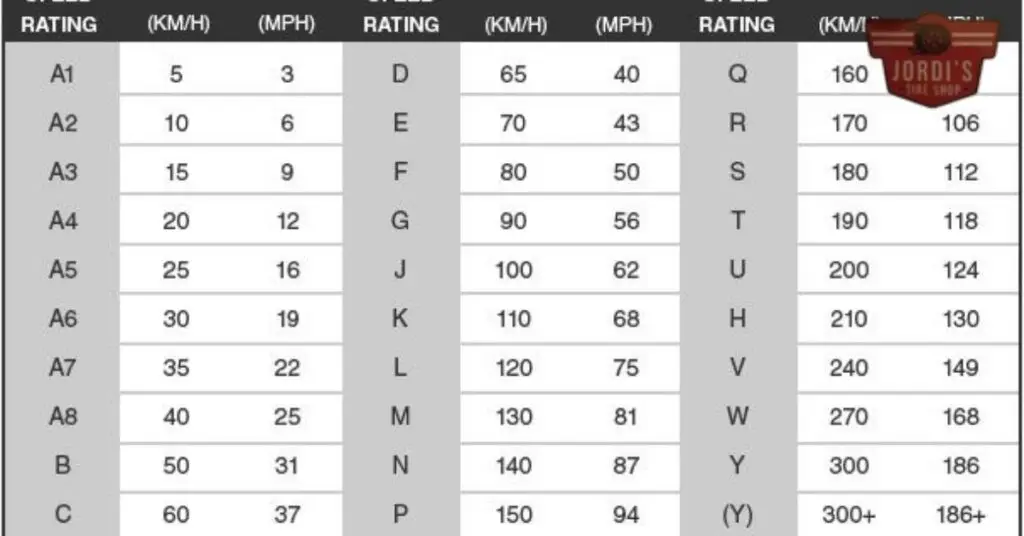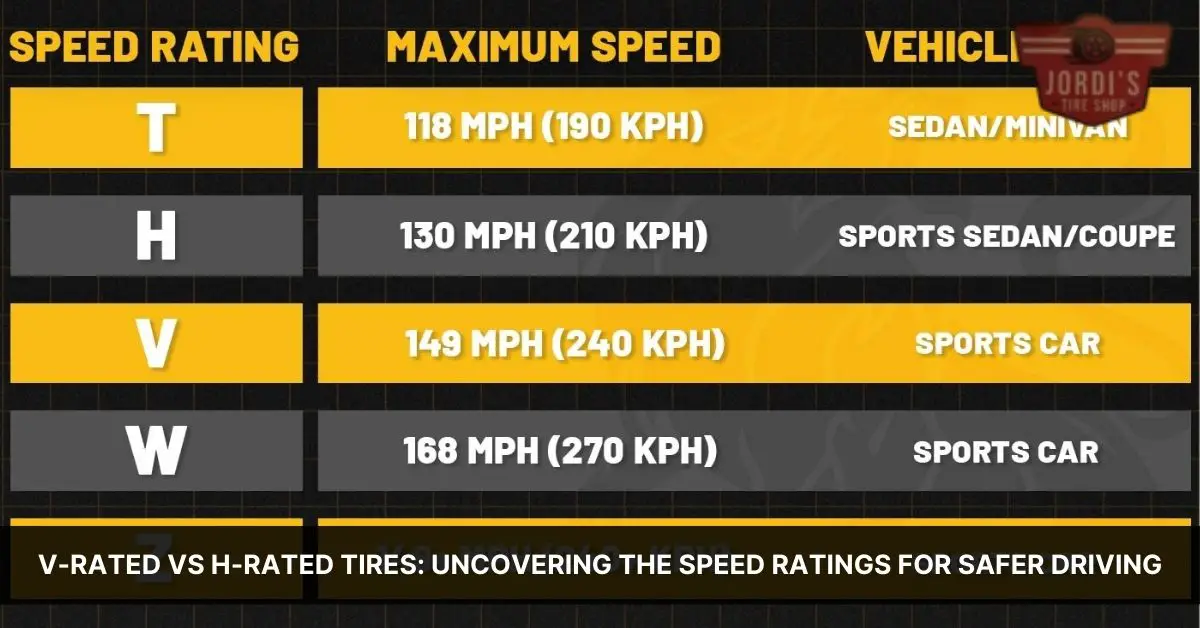Ever wondered what those mysterious letters on your tire’s sidewall mean? You’re not alone. They’re speed ratings, and they’re more critical than you might think. Today, we’ll focus on two of them: V and H.
Understanding these speed ratings isn’t just for car enthusiasts; it’s for anyone who drives. The difference between V and H can impact your vehicle’s performance and safety. So buckle up as we investigate into the industry of speed ratings, and help you make an well-informed choice for your next tire purchase.
Understanding the Concept of Tire Speed Rating

Exploring deeper into the area of tire speed ratings, it’s pivotal to explore the intricacies of the system and grasp the implications of speed ratings in practical scenarios.
Breaking Down the Speed Rating System
Breaking down the speed rating system involves understanding the alphanumeric codes present on tire sidewalls. Each letter signifies a exact maximum speed the tire can sustain under optimum conditions. For instance, ‘V’ rated tires denote a maximum speed limit of 149 miles per hour (mph) while ‘H’ rated tires imply a speed limit of 130 mph. These ratings do not encourage drivers to accelerate to their tire’s maximum speed, but rather provide them with a baseline figure for tire capabilities. It’s crucial not to exceed this limit, considering it as the tire’s utmost safe speed.
Importance of Tire Speed Rating
Grasping the importance of tire speed rating is critical for road safety and optimal vehicle performance. Speed ratings indicate the tire’s high-speed capabilities and its ability to dissipate heat. Heat, produced due to friction between the tire surface and the road, increases as your speed rises. So, tires with a higher speed rating can dissipate more heat effectively, thereby reducing the risk of tire blowouts. It also influences your vehicle’s handling and cornering abilities. For instance, tires with a ‘H’ rating may not provide the same responsiveness or smooth cornering as ‘V’ rated tires. By understanding these implications, you can ensure that the tires you choose align well with your vehicle’s performance requirements and your driving habits.
Exploring the V-Rated Tires

Maintaining your focus on speed ratings, shift your attention specifically to ‘V’-rated tires in this section. Let’s investigate into the characteristics these tires possess and weigh their perks against possible drawbacks.
Features and Performance of V-Rated Tires
‘V’-rated tires stand out for their optimal performance at high speeds. Originating with sports cars and high-end sedans, these tires can sustain a maximum speed of 149 mph under ideal conditions. Engineered to support high-speed cruising, ‘V’-rated tires exhibit superior traction, cornering, and stopping power. They offer improved grip, translating to a fast response time when handling. Contrary to ordinary tires, ‘V’-rated ones excel in heat dissipation, primarily due to their composition of high-quality, heat-resistant materials. This vital trait alleviates the risk of overheating and blowouts, even during prolonged highway driving.
But, it’s important to highlight that these features are observable when the tires are adequately maintained and used within their rated boundaries. In other words, if you exceed the maximum speed, the tire’s performance can rapidly deteriorate, compromising your vehicle’s safety.
Pros and Cons of V-Rated Tires
Among the advantages of ‘V’-rated tires, you’ll find enhanced handling and better heat management topping the list. High-speed performance comes naturally to these tires, optimizing your driving experience during long road trips or high-paced journeys. Superior traction gives you an edge in various driving situations, from cornering to sudden stops.
On the flip side, ‘V’-rated tires can wear out faster than tires with lower ratings if used consistently at their speed maximum. Also, they come with higher price tags, making them a important investment. Not to mention, they might not be the best fit for smaller cars or those designed for city use, given that their potential remains unutilized in stop-and-go traffic and lower speed limits.
Eventually, the decision rests in your hands. If your car’s performance and your driving style call for superior speed and handling, ‘V’-rated tires can certainly step up to the plate. But, always keep in mind your vehicle’s manufacturer recommendations about tire ratings and remember that “maximum speed” isn’t something you should aim to hit—it’s a safety parameter you’re better off not exceeding.
Delving into H-Rated Tires
Having explored ‘V’-rated tires, it’s time to dive deeper into the intricacies of ‘H’-rated tires. Tire speed ratings deliver crucial insights into a tire’s capabilities, and understanding ‘H’-rated tires can significantly enrich your comprehension of this key aspect.
Characteristics and Behavior of H-Rated Tires
‘H’-rated tires, denoting the alphanumeric symbol at the tire sidewall, signifies the potential to maintain speeds up to 130 mph. It’s important to comprehend, but, that these figures reflect the optimum conditions and are instituted as maximum capacities, not targets to attain. Primarily, ‘H’-rated tires are adept at managing the heat that results from friction at elevated speeds. This proficiency in heat dissipation predominantly reduces the chance of untimely tire blowouts, so elevating the safety quotient of the vehicle. The characteristics of ‘H’-rated tires also influence the vehicle’s overall handling, with impact on aspects such as cornering.
A noteworthy element of ‘H’-rated tires is their versatility. Palpably, these tires are suitable for a wide range of vehicles, from small cars to family sedans. Their performance attributes align snugly with the requirements of standard city or highway driving.
Advantages and Disadvantages of H-Rated Tires
Every tire type carries distinct advantages and disadvantages, and ‘H’-rated tires are no different. An explicit advantage lies in their heat management capabilities. Capable of running at considerable speeds without overheating, ‘H’-rated tires lessen the prospect of spontaneous blowouts, so improving vehicle safety. Also, the versatility of ‘H’-rated tires qualifies them as a fitting choice for diverse types of vehicles and driving environments.
Conversely, the disadvantages of ‘H’-rated tires are minimal. The principal downside pertains to their limitations in speed in comparison to, say, ‘V’-rated tires. For drivers with high-performance cars or those who routinely indulge in high-speed driving, ‘H’-rated tires might not deliver the desired performance. It’s vital, nonetheless, to gauge your driving habits and your vehicle’s efficiency needs when choosing tire ratings. Decisions should align more with safety parameters and actual requirements, rather than speed prospects.
Comparison of V-rated and H-rated Tires

Tires, a crucial but often overlooked aspect of vehicle performance, vary greatly in type and capability. The focus here is to draw comparisons between two of the most common speed ratings, V-rated and H-rated tires.
Comparing Performance
When it comes to performance, V-rated tires take the front seat. Designed for precision at high-speeds, these tires bring superb traction, cornering, and braking power to the table. These are gold standards for sports cars and other fast-paced vehicles, where high-speed, accurate handling ranks high. For instance, car enthusiasts who enjoy freeways or open road sessions would find V-rated tires significantly advantageous.
On the flip side, H-rated tires, with their top speed of 130 mph, are a suitable choice for everyday driving. Be it in the bustle of city drives or the ease of highways, these tires perform reliably. They provide decent traction and cornering, with controlled handling which is both secure and comfortable. For standard sedans and smaller cars, H-rated tires often prove to be a good pick.
Comparing Durability and Lifespan
Durability and lifespan differentiate V-rated and H-rated tires. V-rated tires, even though their strength in performance, tend to wear out faster. The superior raw materials used to improve heat dissipation and maintain high-speed precision cause them to depreciate quickly. Regular, meticulous servicing is critical to ensure a reasonable lifespan for these wallet-lightening tires.
Conversely, H-rated tires, with their versatile performance, have a considerably more extended lifespan. They help with better heat management, extending the tread life. Known to be adaptable to varying driving conditions, these tires tend to have a more balanced rate of degradation. So, if longevity in tire life is a dominant consideration, H-rated tires are your go-to.
When choosing between V-rated and H-rated tires, it’s essential to consider not just the maximum speed listed but also performance, durability, and how these tie-in to your driving habits and the vehicle’s requirements. In the end, it’s about matching your tires to your vehicle’s needs and your real-industry driving experience. It’s not a race to the speed limiter, but the journey in getting there, that matters.
Choosing Between V-Rated and H-Rated Tires
Selecting between V-rated and H-rated tires involves more than just considering speed potentials. Differing in their performance properties, they appeal to distinct driving needs. Keep in mind the factors determining their appropriate usage while making your decision.
Factors to Consider
Car Type and Purpose, the main element to consider, defines the perfect match. Specifically, sports cars and high-end sedans offer the optimal platform for V-rated tires, granting superior traction and cornering, and excellent heat dissipation. But, smaller cars and vehicles commonly used in urban environments find ‘H’-rated tires more advantageous due to their enhanced reliability.
Durability and Lifespan further impact your choice. V-rated tires, while performing excellently at high speeds, tend to wear out faster, raising maintenance costs. Conversely, H-rated tires demonstrate extended durability, hence justifying their expense.
Driving Styles and Environments significantly influence the selection. High-speed enthusiasts and highway frequenters may lean towards V-rated tires for their precision and performance. On the other hand, city drivers or those seeking a balance of performance and longevity might find H-rated tires more suiting.
Making Your Decision
Weighing the factors thoroughly ensures you make a decision that melds with your individual needs. Align not just to your car type, but also contemplate your typical driving conditions and personal style. Remember, vehicle safety and driving satisfaction are paramount. While making a choice, consider these elements rather than focusing solely on speed ratings. Your ultimate choice should enhance your driving experience while ensuring road safety, propelling you towards an optimized journey every time you take the wheel.
Real-world Applications and Situations

Let’s continue the discussion by exploring real-industry applications and situations, pulling from case studies while exploring the uses of both V-rated and H-rated tires.
Case Studies of Using V-rated Tires
V-rated tires find favor with high-performance vehicles, essentially sports cars and luxury sedans. To illustrate, consider the example of the BMW M3, an automobile that demands exceptional road holding capabilities. This need for extreme grip at high speeds makes V-rated tires an excellent fit.
Next, take the case of the Nissan GTR, a car that can reach speeds over 120 mph in mere seconds. Here, the high-speed durability and superior traction of V-rated tires ensure better heat dissipation, preventing a blowout during a high-speed stint.
Case Studies of Using H-rated Tires
On the other hand, H-rated tires find their niche within a variety of vehicles suitable for city driving or long-haul travel on highways. For instance, the wildly popular Honda Civic makes good use of H-rated tires. These tires effectively manage heat and provide reliable performance at speed limits universally common in cityscapes and highways.
Similarly, the Ford Fusion, a family sedan known for its comfort and reliability, benefits from the versatile H-rated tires. They cater to the car’s needs by providing a balanced mix of durability, comfort, and safety while still offering decent speed capabilities for highway driving.
Conclusion
You’ve taken a deep jump into the industry of tire speed ratings, particularly V and H ratings. Now, you’re equipped with valuable knowledge to make an well-informed choice when buying tires. You know that ‘V’ rated tires are made for high-speed performance, perfect for sports cars and high-end sedans. On the other hand, ‘H’ rated tires offer a versatile solution for everyday driving, fitting a wide range of vehicles. Remember, these ratings are not speed targets, but safety parameters. It’s crucial to pick the right tires based on your vehicle’s needs, your driving habits, and safety requirements. Whether you’re behind the wheel of a BMW M3 or a Honda Civic, the right tires can enhance your vehicle’s performance and your driving experience. So choose wisely, drive safely, and enjoy the ride.
What are tire speed ratings?
Tire speed ratings are alphanumeric codes found on tire sidewalls that indicate a tire’s maximum speed capability under optimal conditions. They reflect the tire’s ability to manage heat generated through friction.
What do ‘V’-rated and ‘H’-rated stand for?
‘V’-rated tires are capable of sustaining speeds up to 149 mph, while ‘H’-rated tires can handle speeds up to 130 mph. The letters ‘V’ and ‘H’ are part of the speed rating code found on a tire’s sidewall.
Are speed ratings important for vehicle performance?
Yes, speed ratings affect vehicle performance, specifically handling, cornering, and safety. Tires with higher speed ratings dissipate heat more effectively, reducing the risk of tire blowouts.
How do ‘V’-rated tires differ from ‘H’-rated tires?
‘V’-rated tires are optimal for performance at high speeds, with superior traction and heat management, ideal for sports cars. ‘H’-rated tires are versatile and reliable for standard city or highway driving, suitable for a range of vehicles.
Are ‘V’-rated tires always a better choice?
Not necessarily. While ‘V’-rated tires offer superior performance, they might wear out faster and are typically more expensive. They’re best suited for high-performance vehicles and may not be ideal for smaller cars or urban driving.
Are there real-world examples where ‘V’-rated and ‘H’-rated tires are used?
Yes, high-performance cars like the BMW M3 and Nissan GTR often use ‘V’-rated tires. Standard vehicles like the Honda Civic and Ford Fusion are typically equipped with ‘H’-rated tires, ideal for city and highway driving.
Related Posts:
- Battle of the Tires: Goodyear Assurance WeatherReady vs. Michelin CrossClimate 2 Reviewed
- Battle of the Titans: Goodyear Wrangler UltraTerrain AT vs BF Goodrich KO2 Explained
- Goodyear Assurance WeatherReady Vs MaxLife: Which Tire Rules the Road?
- Hankook Dynapro AT2 VS Falken Wildpeak AT3W: Unraveling the Best All-Terrain Tire for Your Ride
- Michelin Pilot Sport 4S vs Pirelli P Zero: Your Ultimate Tire Showdown
- V-rated vs H-rated Tires: Uncovering the Speed Ratings for Safer Driving
- Decoding the Dilemma: SL vs C1 Tires – A Comprehensive Guide for Car Owners

